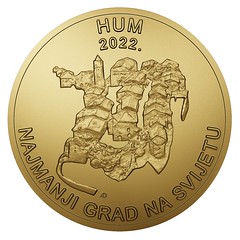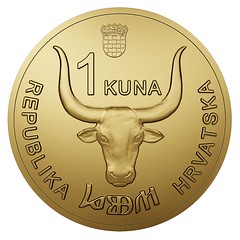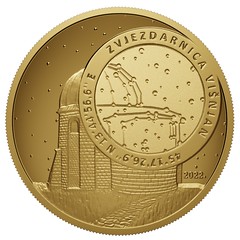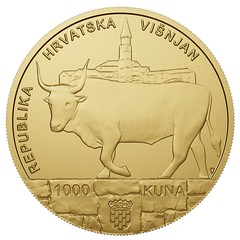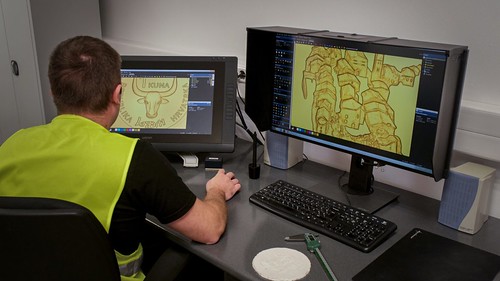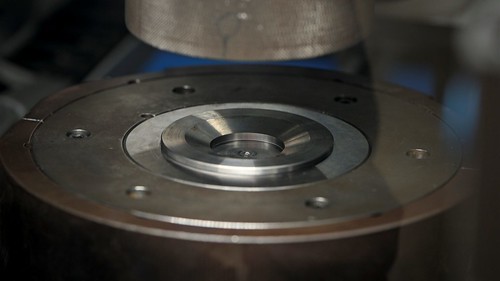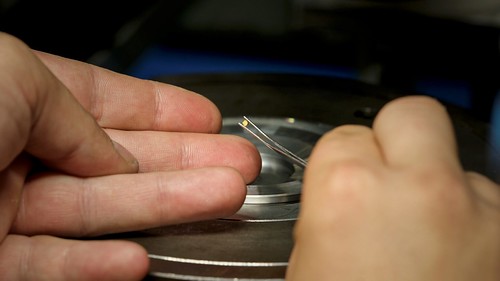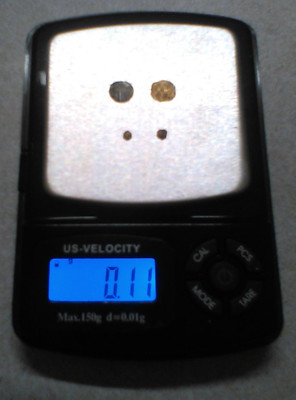
PREV ARTICLE
NEXT ARTICLE
FULL ISSUE
PREV FULL ISSUE
V25 2022 INDEX E-SYLUM ARCHIVE CROATIA MINTS THE LAST KUNASHere's the press release for the Croatian Mint's newest coins. Is one of them the world's smallest? -Editor A Spectacular Farewell to the Kuna: Croatia Mints the World's Smallest Coin On 1 January 2023, Croatia will introduce the euro. To mark the occasion, the Croatian Mint came up with something very special for the last kuna commemorative issue: it will set a new record for the world's smallest coin. The record coin is only available in a set, together with a commemorative issue for the Višnjan Observatory. Swissmint just got its Guinness World Record entry as the manufacturer of the world's smallest coin – and is already about to lose this title. The Croatian Mint shows off its skill by undercutting the Swiss record: with a weight of 0.05g and a diameter of 1.99mm, a Croatian issue is now the world's smallest coin. The theme of the issue is more than fitting: the piece is dedicated to the world's smallest city called Hum. It has a face value of one kuna.
The new record coin is both lighter and of a smaller diameter than the 2020 1/4 Swiss franc on Albert Einstein with a weight of 0.063g and a diameter of 2.96mm. The 1-kuna Hum coin also undercuts the Swiss mintage figure of 999 specimens. Only 199 pieces will be issued of the new
The Smallest Coin for the Smallest City Despite its small population, Hum has the right to call itself a city, because it has everything that made for a city in the past: a city wall, a self-elected government and its own laws. Hum's history dates back to the 11th century AD, when Count Ulric I, Margrave of Carniola and Istria, fortified the southern border of his territory with small castles. One of them was called Cholm. In 1102, it came under the control of the Patriarchate of Aquileia. The latter lost all its territories, including Hum, during the Venetian conquest in 1420. Hum then belonged to the Venetian maritime empire until it was dissolved by Napoleon in 1797. The 1815 Congress of Vienna put Istria, and with it Hum, under Austrian rule for one century. Then it became part of Italy, Yugoslavia and today Croatia – an eventful history for such a small city. Today, Hum and its completely preserved city walls are a favourite tourist destination. They love to stroll through the two streets and visit all the historical buildings that tell the rich history of the world's smallest city.
The Design The coin's reverse shows the head of an Istrian cattle with the long horns that are typical of this species. Above 1 KUNA and the Croatian coat of arms, below the word Hum in Glagolitic script.
The Artist
The Višnjan Observatory The observatory was founded on 13 November 1992 by the Amateur Astronomical Society of Višnjan. The project was initiated by the Croatian teacher Korado Korlevic. From the private observatory, amateur astronomers discovered an impressive 1,749 asteroids between 1995 and 2001! This makes Višnjan one of the world's top five observatories when it comes to detecting near-Earth objects. The observation of near-Earth space is of utmost importance, especially because this is where asteroids are located that can be dangerous to our planet. Besides the high number of discoveries, Višnjan takes special pride in the fact that many pupils visit the observatory every year and learn with a mentor how to observe the stars at night. Unfortunately, light pollution in Višnjan got so bad around the turn of the millennium that the astronomers had to relocate. Their new observatory is located further inland on a hill near the small village of Tican.
The Design The reverse features an Istrian cattle with the long horns that are typical of this species, above, view of the Višnjan municipality, below a wall with the Croatian coat of arms. Above REPUBLIKA HRVATSKA VIŠNJAN.
The Artist
Only Available as a Set
Issue Date and Price Kavan Ratnatunga passed along a page from the Mint's website with more images and information on the coin's creation. They have an asterisk alongside their claim to the "smallest coin" title: *From what we have gathered so far, we can tell that the Hum gold coin is the smallest commemorative coin in the world. -Editor The making of the smallest coin
In order to mint the smallest commemorative gold coin in the world*, phases of the production process had to be adjusted. The process began with the development of the motif of the coin. In cooperation with the author, sculptor Ana Divkovic, we created a display of the motif detailed enough to show an entire town within a 1.99 mm diameter, yet technically feasible. Through a special treatment, we created the smallest die for the smallest coin. The motif was engraved using Acsys' most advanced Femto laser and their Now that's small! -Editor
To read the complete article, see:
Ken Spindler of San Diego saw the story in Numismatic News. -Editor Ken writes: "This is not the world's lightest coin, despite its extreme diminutiveness. Maybe it's so hefty relative to its diameter because it's made of finer gold, and/or thicker, but both my fingernail-thin 1800s Nepal dam of silver (KM-593) and my Nepal dam of gold (KM- 604) weigh significantly less. Each is uniface, crude, unround, presumably hand-hammered, and slightly under 7 mm. in diameter. On my hundredth-gram scale, these beauties weigh in at... wait a minute, neither coin registers at all. I.e., 0.00 gram each. I don't know how accurate my scale is, but I get significant bumps when I lightly blow on it while the coins are still on it. Oops, not supposed to blow on coins. Tricking my scale by placing a 2x2 on it first yields increased gross readings indicating that each of my coins weighs about 0.02 gram.
"Maybe at 0.05 gram the Croatian coins still hold record-low weights for machine-struck coins with images on both sides. "Together my 4 coins weigh about 0.11 gram."
Wayne Homren, Editor The Numismatic Bibliomania Society is a non-profit organization promoting numismatic literature. See our web site at coinbooks.org. To submit items for publication in The E-Sylum, write to the Editor at this address: whomren@gmail.com To subscribe go to: https://my.binhost.com/lists/listinfo/esylum All Rights Reserved. NBS Home Page Contact the NBS webmaster 
|
